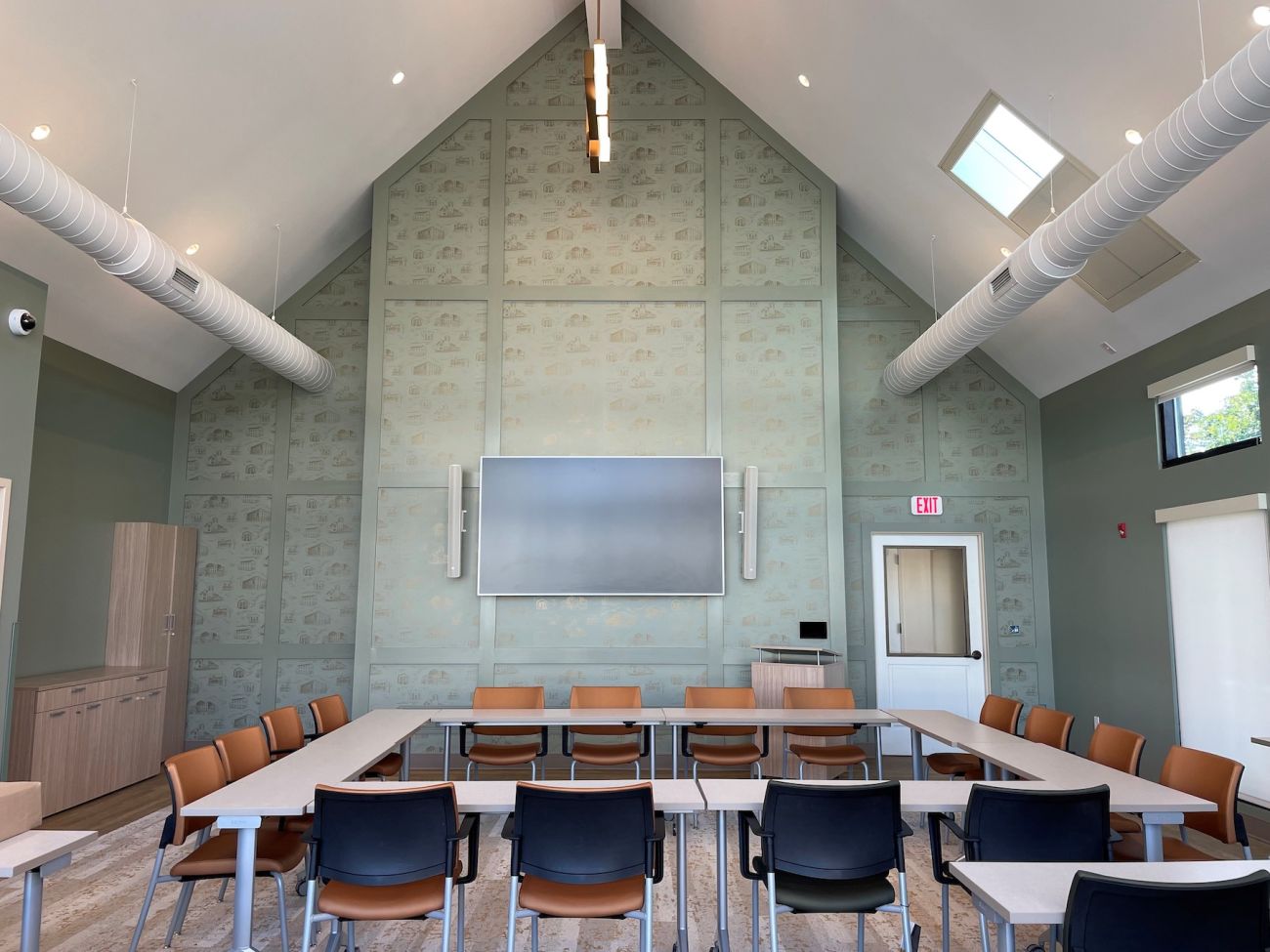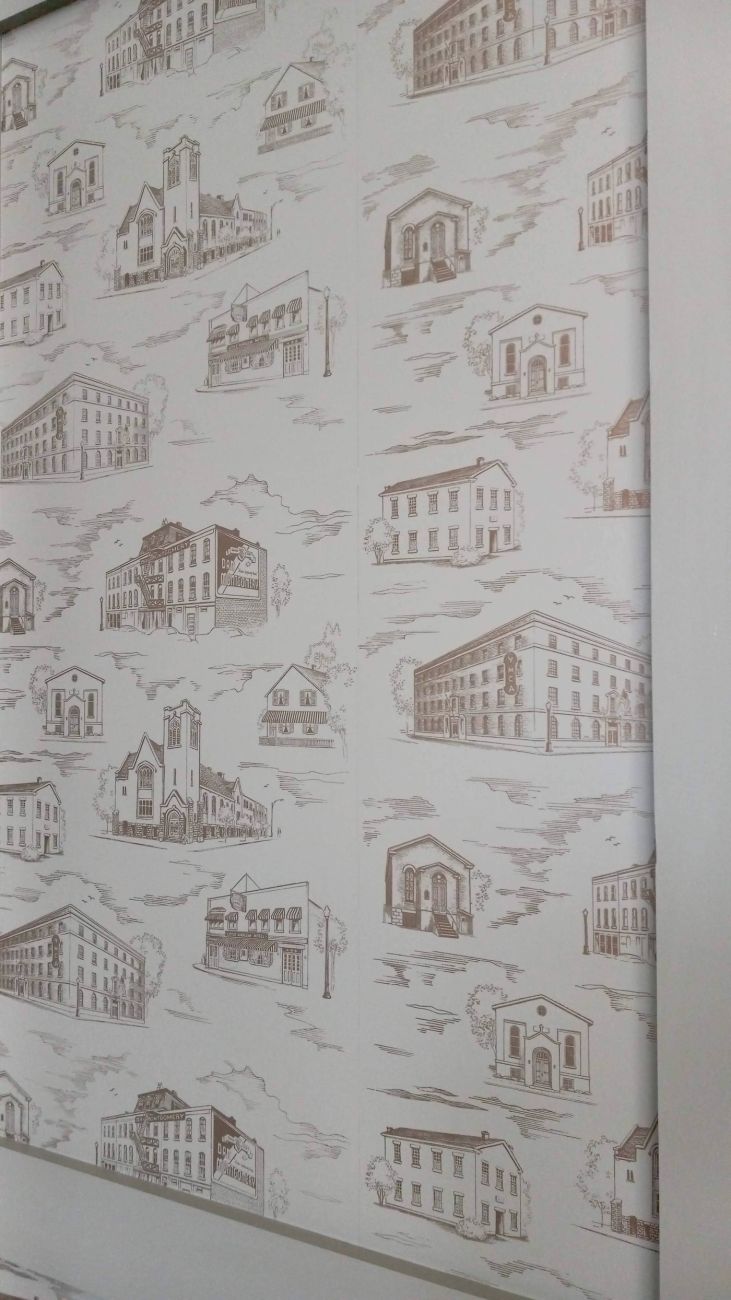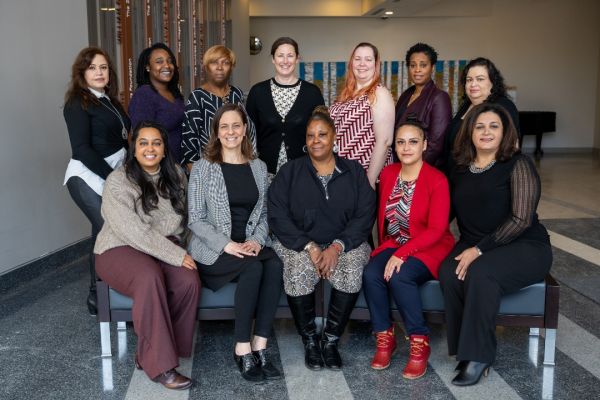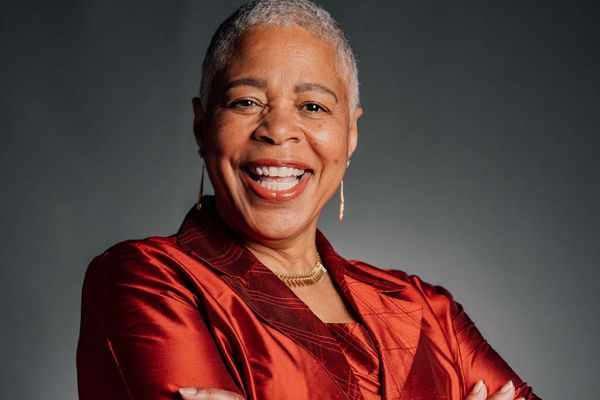Upon entering the new Roswell Park Comprehensive Cancer Center Community Outreach & Engagement Center at 907 Michigan Avenue, visitors are greeted with scenes from important physical landmarks in the African American history of Buffalo.
Embossed in gold print on black wallpaper are nine images of culturally significant buildings, some lesser known than the famed Colored Musicians Club but all of which are of equal importance.
“The history is literally on the walls,” says Nikia Clark-Robinson, Director of Community Outreach & Engagement at Roswell Park.
When the building was in the final stages of construction last summer, the project’s designer worked with Clark and Terry Alford, Executive Director of the Michigan Street African American Heritage Corridor, to select the structures to include.
“The idea was, considering where this building is located, it would be great to bring more awareness to African American historical landmarks that people may not have known about, covering the categories of faith-based places, education, political movement, business and community,” Clark says.
Once the nine buildings were selected, the images were provided to Red Disk, a manufacturing company on Great Arrow Avenue in North Buffalo, to fabricate the custom-made, silk-screened wallpaper. Two versions were made, one in black and one in green. The green wallpaper was installed inside the large meeting room, which is available for community groups to reserve for free through Roswell Park’s Community Outreach & Engagement office.
Bringing history to life
Kandice Hailey, another member of the COE team, was fascinated by the wallpaper when she joined the team last summer. She took it upon herself to do a little digging into the buildings to learn more about them.
“I was really surprised to learn about the Mary B. Talbert House at 521 Michigan. She actually met with W.E.B. Dubois there and helped form the NAACP. I had no idea that happened just down the street,” Hailey said with excitement. Talbert was also a supporter of universal women’s suffrage and founder of the National Association of Colored Women’s Clubs; she is buried at Forest Lawn Cemetery.
“I had no idea of the history in the Little Harlem Hotel. Ann Montgomery and her husband Dan owned a bunch of businesses and saloons. The hotel actually started as an ice cream parlor, but back in the 1930s, they didn’t have a lot of places for jazz musicians to congregate in,” she says.
Eventually, jazz legends including Count Basie, Louis Armstong, Billie Holiday and Cab Calloway were featured on the stage at the Little Harlem Hotel, making it a world-renown establishment in the heart of downtown Buffalo. Sadly, the building was destroyed by arson in the 1990s, but its legacy lives on in the wallpaper at 907 Michigan Avenue.
The wallpaper also features an image of the Vine Street School, formerly at 17 Vine Street but later torn down, once a “dilapidated” community school fought for and supported by African American families in the neighborhood who wanted better education for their children when schools were segregated. Their efforts led to the start of desegregation in Buffalo Public Schools.
“Did you know Buffalo has one of the first YMCA locations to be built by a Black architect? It was located at 585 Michigan,” Hailey says. “They taught carpentry, they had a music studio, they taught barbering. They had 70 beds within the YMCA to house young men who were displaced and gave them training in a skill.”
Community Outreach and Engagement (COE)
Read more about all the ways Roswell Park's COE team is interacting with, educating and screening those most at risk for developing cancer in our community.
Other historic locations memorialized on the wallpaper include the Michigan Street Baptist Church, the first Black church built in Buffalo by African Americans and one of the final stops on the Underground Railroad; the Vine Street AME Church; the Bethel AME Church and Dan Montgomery’s saloon at 158 Exchange Street.
Both Clark and Hailey are excited about the recognition and celebration of these important legacies and landmarks.
“Michigan Street is historic and iconic. This building is designed to appeal to minorities in this area and because we’re on Michigan, we should showcase the history here. People should know why this street is important and why it’s important for this building to be here,” Hailey says.
The Roswell Park Community Outreach and Engagement Center, which opened in October, is available for use by any community group or organization that has a project or effort pertaining to improving the quality of life for people in Buffalo and Western New York. To reserve the meeting room, contact Kandice Hailey at 716-845-8340 or use the reservation link available here.



